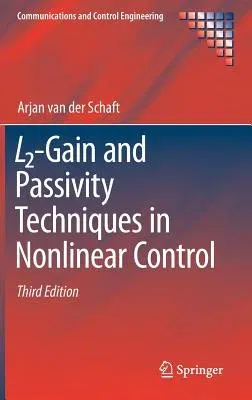This standard text gives a unified treatment of passivity and
L2-gain theory for nonlinear state space systems, preceded by
a compact treatment of classical passivity and small-gain theorems for
nonlinear input-output maps. The synthesis between passivity and
L2-gain theory is provided by the theory of dissipative
systems. Specifically, the small-gain and passivity theorems and their
implications for nonlinear stability and stabilization are discussed
from this standpoint. The connection between L2-gain and
passivity via scattering is detailed.
Feedback equivalence to a passive system and resulting stabilization
strategies are discussed. The passivity concepts are enriched by a
generalised Hamiltonian formalism, emphasising the close relations with
physical modeling and control by interconnection, and leading to novel
control methodologies going beyond passivity.
The potential of L2-gain techniques in nonlinear control,
including a theory of all-pass factorizations of nonlinear systems, and
of parametrization of stabilizing controllers, is demonstrated. The
nonlinear H-infinity optimal control problem is also treated and the
book concludes with a geometric analysis of the solution sets of
Hamilton-Jacobi inequalities and their relation with Riccati
inequalities for the linearization.
- L2-Gain and Passivity Techniques in Nonlinear Control
(third edition) is thoroughly updated, revised, reorganized and
expanded. Among the changes, readers will find:
- updated and extended coverage of dissipative systems theory
- substantial new material regarding converse passivity theorems and
incremental/shifted passivity - coverage of recent developments on
networks of passive systems with examples
- a completely overhauled and succinct introduction to modeling and
control of port-Hamiltonian systems, followed by an exposition of
port-Hamiltonian formulation of physical network dynamics
- updated treatment of all-pass factorization of nonlinear systems
The book provides graduate students and researchers in systems and
control with a compact presentation of a fundamental and rapidly
developing area of nonlinear control theory, illustrated by a broad
range of relevant examples stemming from different application areas.

